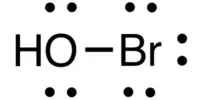Food irradiation is a process that uses radiation to control food pests (e.g., microbes and insects) and to prevent spoilage. Ionizing radiation, such as gamma-ray, X-ray or electron beam energy that can be transmitted without directly contacting the source of energy (radiation) capable of releasing electrons from the molecular bond (ionization) in the target’s feed. The effects of glow on food and on animals and on people eating radiation foods have been extensively studied. These studies clearly show that when radiation is used as approved in foods, pathogenic germs are reduced or eliminated, food is not radioactive, and hazardous substances are not present in food and the nutritional value of food is unchanged. Food irradiation effectively destroys the organisms responsible for disordered foods and foodborne illnesses and enhances the shelf life of irradiated foods by inhibiting germination.
Sources of ionizing radiation used include gamma rays, electron beams, and x-rays. Gamma rays are produced by radioactive isotopes such as cobalt-60. Although consumers’ perceptions about foods treated with radiation are more negative than processed foods in other ways, because people assume that food is radioactive or mutated, these concepts do not agree with the process by which radiation works. Electronic beads are produced by linear skin, which they themselves are powered by. Applying a dose to a product is the most important thing in the process. Considered a food-safety intervention since 1963, when it approved the control of insects in wheat and flour, irradiation killed or inactivated harmful bacteria, including E. coli O157: H7, Salmonella, Campylobacter, Wisteria, Clostridium, and Vibrato. Thus reducing the threat of foodborne illness. In addition, all independent studies, the US Food and Drug Administration (FDA), the World Health Organization (WHO), the Centers for Disease Control and Prevention (CDC), and the US Department of Agriculture (USDA) have performed studies that confirm radiation and caution. The two companies are working closely with the International Plant Protection Convention (IPPC) and the Codex Alimentations Commission to adjust global irradiation standards.
Food irradiation is approved in more than 60 countries, with around 500,000 metric tons of food every year around the world. Reducing the risk of foodborne pathogens caused by Campylobacter, Salmonella, E. coli and Wisteria (especially in meat, poultry, and fish). The guidelines on how to radiate foods, as well as how those foods are allowed to radiate, vary from country to country. In Austria, Germany and many other countries of the European Union, the process can be processed only by dry herbs, spices, and seasoning radiation, and only to a certain extent, but all foods are approved at any dose in Brazil. Research indicates that irradiation can destroy vitamins and nutrients, disrupt proteins and essential fatty acids, and get a bad odor, texture, and odor.”















